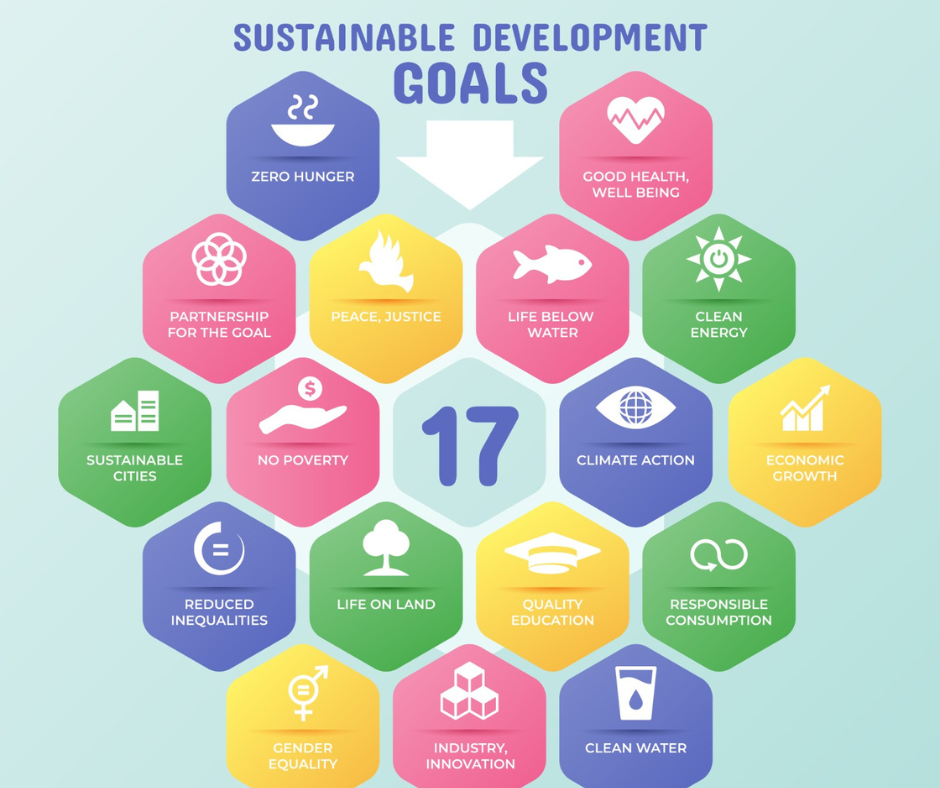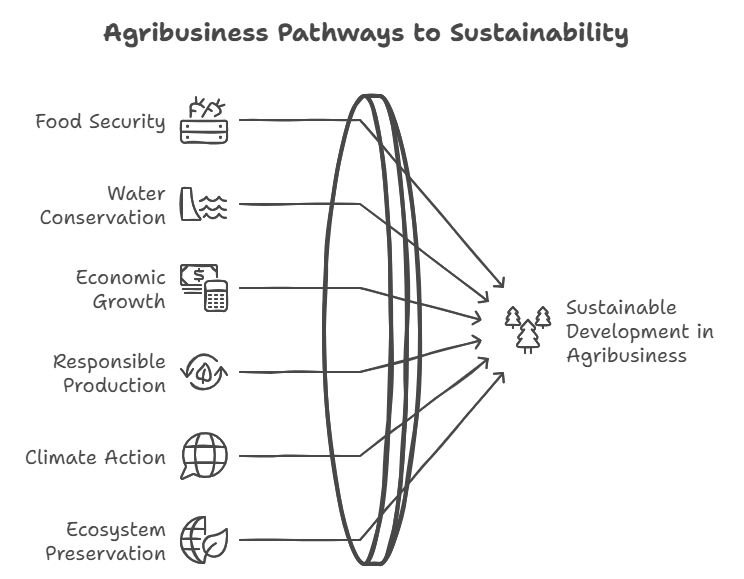Contact: +91 99725 24322 |
Menu
Menu
Quick summary: Business leaders have understood that sustainability is an investment. As part of the efforts to strengthen companies’ corporate responsibility in different industries, the Global Corporate Sustainability Index rates their adherence to Environmental, Social and Corporate Governance (ESG). . Businesses need to embed sustainability in all parts of their organization and translate it into their brands.

Do you know that business could not only thrive financially but also contribute positively to global challenges like poverty, climate change, and inequality. It’s not just a lofty ideal—it’s a reality business can create by embedding the Sustainable Development Goals (SDGs) into their core strategy.
According to United Nations Global Compact(UNGC), 92% of CEOs consider the SDGs to be important for the future success of their business.
Yet, despite the growing emphasis on sustainability, many companies find it difficult to navigate the complex world of SDGs and integrate them into their day-to-day operations. Without a clear strategy, businesses risk missing out on the long-term benefits of sustainability, from improved brand reputation to better risk management and access to new market opportunities. How can businesses turn SDGs from a concept into a competitive advantage?
Key Takeaways
Today the pressure to adopt sustainable practices for businesses has never been greater. Companies are no longer evaluated solely based on profits but also by their environmental, social, and governance (ESG) performance. The Sustainable Development Goals (SDGs), established by the United Nations, provide a global blueprint for businesses to align their strategies with the broader goal of creating a more sustainable world. However, while the SDGs offer a clear path toward sustainability, many organizations still struggle to integrate these goals effectively into their corporate strategy.
The 17 SDGs with their 169 associated targets are part of the United Nations 2030 Agenda for Sustainable Development. This action plan seeks countries and stakeholders to collaborate to address the three dimensions of sustainable development: economic, social, and environmental.
From ending poverty to reducing hunger, improving access to education and healthcare, to fight against inequalities, the SDGs are an urgent call to action for all the countries in a global partnership.
The SDGs form a part of sustainability framework for government agencies and NGOs to design and refine their policy decisions. In order to strengthen collective action, ground up, SDGs provide a political compass to show the direction and steer us towards the development goals.
SDGs offer a much-needed platform for cultivating trust and building common priorities among nations. The targets of the 2030 agenda are tough to reach and the ‘Business-as-Usual” approach will not make sense. Sustainable development has become a strategic area for the business sector. According to a recent Accenture survey, “Consumers pay real attention to where companies stand on social and environmental issues. Business leaders have understood that sustainability is an investment. The 2030 Agenda- with the United Nations 17 Sustainable Development Goals (SDGs) -is one of the leading frameworks to guide them on this path.
The Sustainable Development Goals (SDGs) are like a global to-do list for making the world a better place. Created by the United Nations, they cover a wide range of issues—like ending poverty, fighting climate change, ensuring quality education, and promoting gender equality—that affect everyone, everywhere. The importance of SDGs lies in the fact that they offer a unified framework for countries, businesses, and individuals to work together toward a more sustainable future.
Here’s why the SDGs are so crucial:
1. Guiding Global Action: The SDGs give a clear direction for tackling some of the world’s most pressing challenges. Whether it’s reducing hunger or improving health, they provide a roadmap for countries and companies to focus on areas that truly matter for the well-being of people and the planet.
2. Business Opportunity: For companies, aligning with the SDGs isn’t just about doing good; it’s also good for business. By embracing sustainability, businesses can attract customers, investors, and employees who care about the planet and society. It opens up new markets, reduces risks, and boosts reputation.
3. Long-term Growth: Adopting SDGs helps businesses think beyond short-term profits. By addressing social and environmental issues, companies can ensure they’re part of a long-term, sustainable future, both for themselves and for the world around them.
4. Collaboration for Impact: The SDGs are all about working together. Governments, businesses, and individuals need to join forces to achieve these goals. When everyone is on the same page, progress is faster, and the impact is much greater.
Businesses play a crucial role in achieving the Sustainable Development Goals (SDGs), as they have the resources, innovation, and global reach to drive meaningful change. Sustainability reporting enables businesses to align their corporate objectives with relevant Sustainable Development Goals (SDGs), demonstrating their contribution to global sustainability challenges.
Achieving the SDGs create at least US$12 trillion in business opportunities.
A leading agribusiness partnered with TraceX’s sustainability platform to transform land restoration practices through regenerative agriculture techniques. This initiative focused on improving soil health, enhancing biodiversity, and reducing carbon emissions, aligning directly with several key Sustainable Development Goals (SDGs). By prioritizing SDG 15 (Life on Land), the project contributed to ecosystem restoration and biodiversity conservation. Through regenerative practices that minimized resource use and maximized efficiency, the company addressed SDG 12 (Responsible Consumption and Production). Additionally, carbon management efforts aimed at reducing greenhouse gas emissions supported SDG 13 (Climate Action), showcasing a holistic approach to sustainability. This collaboration highlights the potential for technology-driven solutions to drive impactful, long-term environmental and social benefits in agriculture.

Achieving the Sustainable Development Goals (SDGs) poses significant challenges for corporations, particularly when aiming to balance profitability, environmental sustainability, and social responsibility. These challenges often come with quantification issues, making it difficult to track progress and demonstrate tangible outcomes.
Technology solutions play a critical role in helping businesses overcome challenges in achieving the Sustainable Development Goals (SDGs) within their operations and supply chains. By leveraging innovative tools and systems, companies can better track, manage, and report on their sustainability initiatives while navigating complex challenges like supply chain transparency, cost implications, and data collection.
Digital Monitoring systems enable consistent and accurate measurement of progress toward SDGs by providing standardized data collection, tracking, and reporting mechanisms.
Blockchain technology offers a decentralized and tamper-proof system for tracking every step of the supply chain. This creates end-to-end visibility, helping businesses verify sustainable sourcing, ethical labor practices, and compliance with fair trade or environmental standards.
Compliance management software helps companies stay up-to-date with changing sustainability regulations and policies. These tools automate the process of assessing compliance, conducting audits, and creating reports that meet regulatory standards.
IoT (Internet of Things) devices collect real-time data on energy usage, emissions, resource consumption, and other critical metrics. This data is then processed and made accessible through dashboards, giving companies full visibility into their operations.
Advanced analytics and dashboards can present progress in easily digestible formats, highlighting immediate wins and long-term milestones. Quick visualizations and impact dashboards make it easier to show the benefits of sustainability efforts.
The TraceX Sustainability Platform is a comprehensive digital solution designed to enhance supply chain transparency, sustainability, and compliance through advanced traceability technology. Leveraging blockchain-based systems, TraceX enables businesses to track products from source to consumption with immutable, tamper-proof records that ensure data integrity and trust.
The platform empowers companies to monitor and verify sustainable and ethical practices throughout their supply chains, offering real-time insights and end-to-end visibility. By integrating features like Digital MRV (Monitoring, Reporting, and Verification) for carbon management, TraceX supports climate-smart practices and ensures compliance with regulations such as the EU Deforestation Regulation (EUDR). This holistic approach not only helps reduce environmental impact but also promotes responsible sourcing, operational efficiency, and alignment with global sustainability standards.
In essence, TraceX’s platform drives sustainable transformation by making supply chain processes transparent, accountable, and data-driven, helping businesses and farmers create more ethical, resilient, and environmentally friendly value chains.
Incorporating Sustainable Development Goals (SDGs) into corporate strategy isn’t just about fulfilling social responsibility—it’s about building a resilient, future-proof business that benefits both society and shareholders. By aligning their strategies with the SDGs, companies can unlock innovation, attract eco-conscious consumers, mitigate risks, and enhance stakeholder trust. Ultimately, the SDGs provide a comprehensive framework for businesses to redefine success, driving growth while making a positive impact on people and the planet.
Aligning with the SDGs helps businesses address global challenges, drive innovation, attract customers and investors, and build long-term resilience and value.
Companies can integrate SDGs by setting clear goals, assessing their supply chains, adopting sustainable practices, and leveraging partnerships to create social and environmental impact.
Key challenges include balancing profitability and sustainability, resource limitations, data tracking issues, and ensuring effective cross-sector collaboration for measurable impact.
